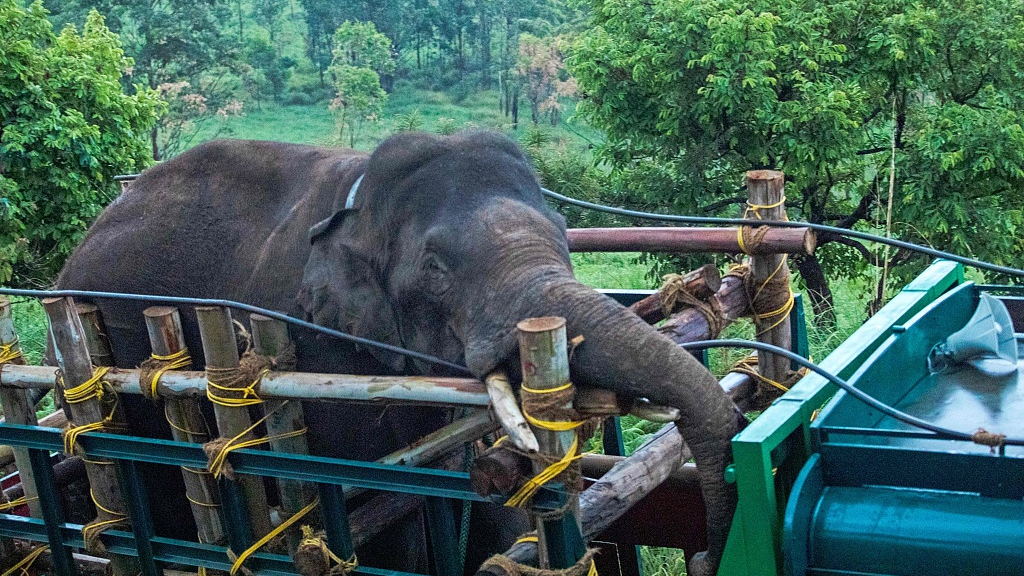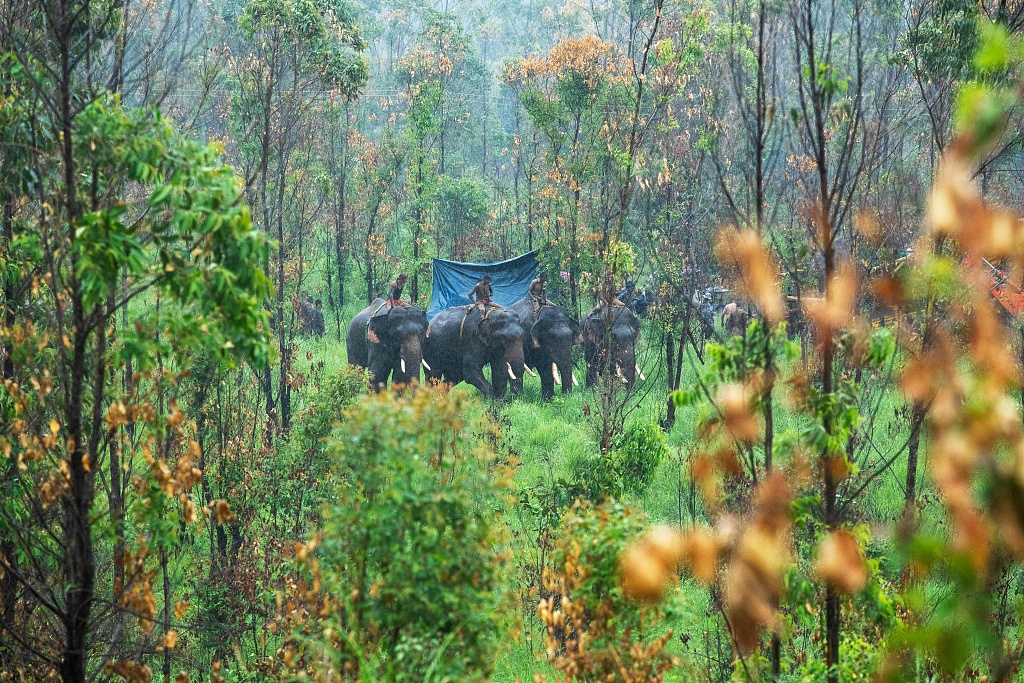
Arikomban, the wild tusker, is caught and transported to a wildlife reserve, at Idukki district in Kerala state, India, April 29, 2023. /CFP
Arikomban, the wild tusker, is caught and transported to a wildlife reserve, at Idukki district in Kerala state, India, April 29, 2023. /CFP
Indian forest officials have tranquilized and relocated a rice-loving wild elephant that killed at least six people, media reports said.
The male elephant – dubbed Arikomban, or rice-tusker – was infamous for raiding shops for rice and grains in the southern state of Kerala.
On Saturday, a team of 150 forest officials caught the elephant, which resisted its captors even after being hit with five tranquilizer shots, the Indian Express newspaper reported.
With its legs tied and eyes bound with a cloth, it was finally pushed and nudged by four kumki elephants – trained elephants used to capture others – into a truck.

Four kumki elephants with forest officials capture Arikomban the wild tusker, at Idukki district in Kerala state, India, April 29, 2023. /CFP
Four kumki elephants with forest officials capture Arikomban the wild tusker, at Idukki district in Kerala state, India, April 29, 2023. /CFP
It was then fitted with a GPS collar and taken to a wildlife reserve.
This was not the first time that officials had tried to capture the elephant, believed to be around 30 years old. Arikomban was hit with tranquilizer shots in 2017, but managed to escape.
Last month, bearing in mind his penchant for rice and grains, officials erected a dummy ration shop to lure the elephant, but a court put a stop to the plan, the newspaper reported.
Conservationists blame the rapid expansion of human settlements around forests and key wildlife corridors for an increase in conflicts between people and animals in parts of India.
According to the government, India is home to more than 60 percent of wild Asian elephants.
As per the last elephant census in 2017, India had a recorded elephant population of 29,964.
(If you want to contribute and have specific expertise, please contact us at nature@cgtn.com.)
Source(s): AFP